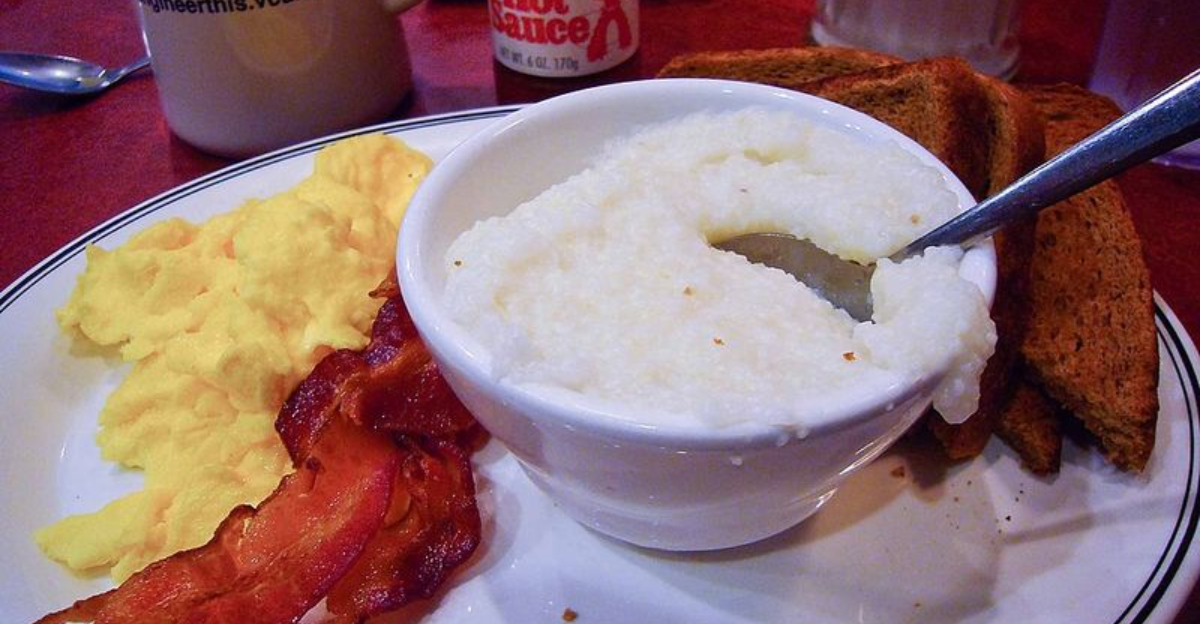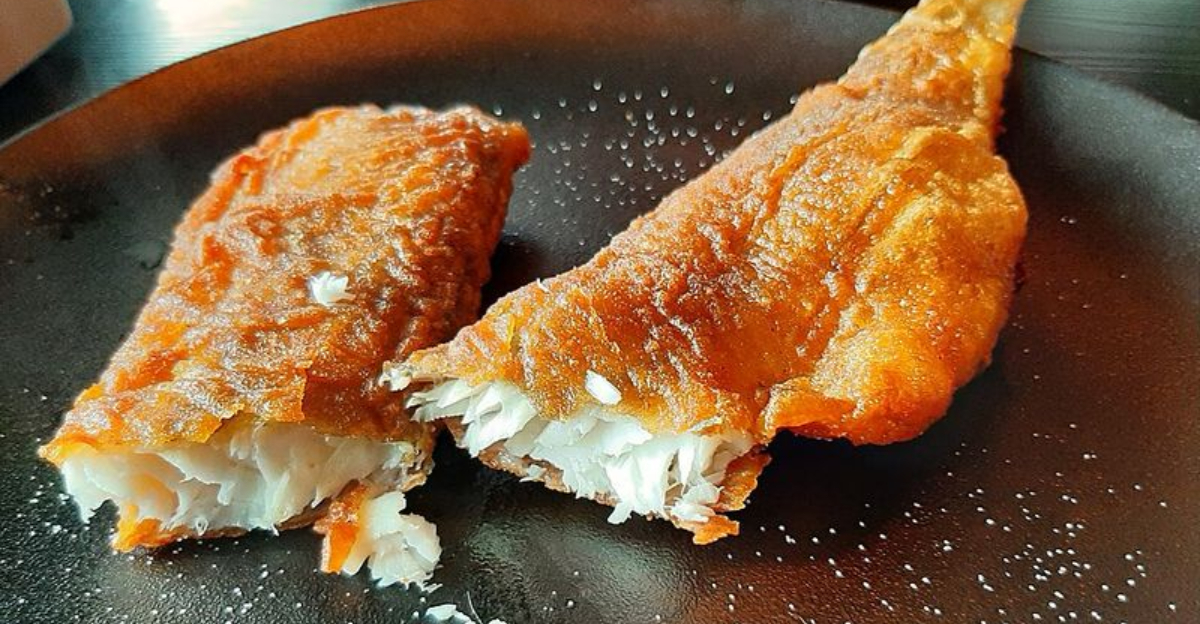18 Popular Foods That Somehow Became Hits
Ever wonder how some of the weirdest foods on Earth ended up on dinner plates worldwide? What seems gross to one person might be a beloved delicacy to another.
Around the globe, people have fallen in love with dishes that make others cringe, and somehow those strange eats became wildly popular.
1. Spam

Who knew canned mystery meat could become a cultural icon? Born during wartime rationing, Spam saved countless families when fresh meat was scarce.
Hawaiians took it to heart, creating dishes like Spam musubi that are now island staples. Fried until crispy, it adds salty satisfaction to breakfast plates everywhere. People either love it passionately or avoid it completely, but nobody can deny its staying power in kitchens worldwide.
2. Durian
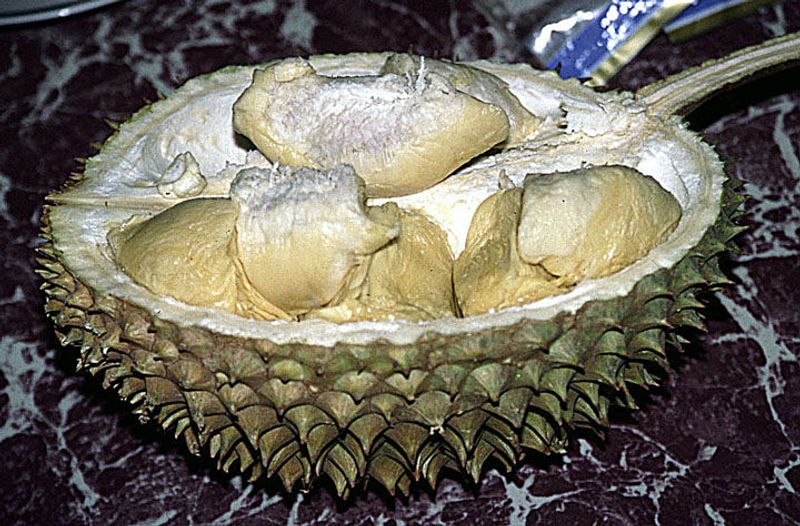
Banned from hotels and public transport across Asia, durian smells like sweaty socks mixed with onions. Yet millions consider it the king of fruits, craving its custard-like texture and complex flavor.
Southeast Asians grow up adoring what Westerners often find revolting. Rich and creamy inside that intimidating spiky shell, durian inspires fierce loyalty among fans who happily endure the stench for one heavenly bite.
3. Black Licorice

You either run toward black licorice or sprint away screaming. Made with anise oil that tastes like medicine to many, it divides candy lovers into bitter rivals.
Europeans especially adore salty versions that Americans find absolutely baffling. Kids often hate it while adults develop strange cravings for that distinctive herbal punch. Somehow it survives in candy aisles despite being possibly the most polarizing sweet treat ever invented.
4. Tripe

Stomach lining sounds like something you’d throw away, not eat. But tripe shows up in beloved dishes across Mexico, Italy, France, and beyond.
Menudo and pho both feature this chewy, honeycomb-textured ingredient that soaks up flavors beautifully. Getting past the idea of eating stomach takes courage, yet cultures worldwide have perfected recipes that turn it into comfort food. Properly prepared, it becomes tender and satisfying despite its unusual origins.
5. Haggis
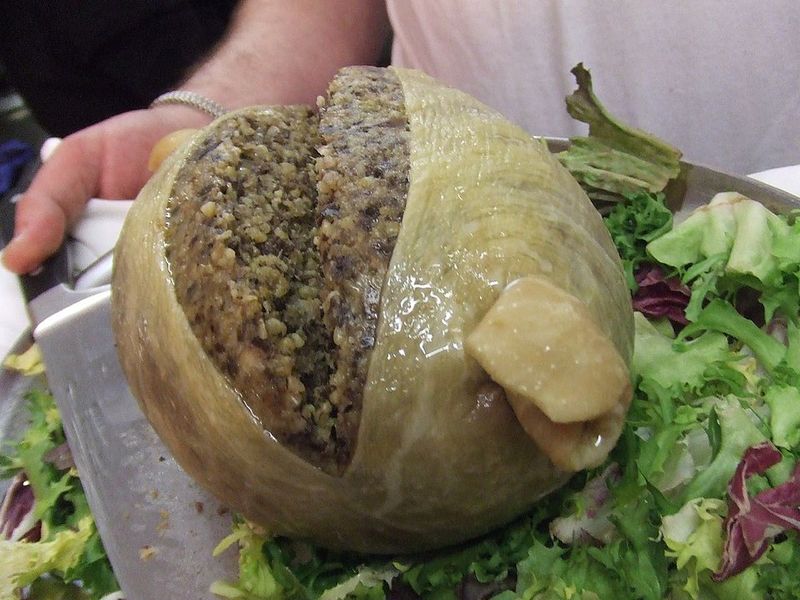
Scotland’s national dish consists of sheep organs mixed with oatmeal and spices, cooked inside a stomach. Sounds horrifying, tastes surprisingly delicious.
Celebrated every Burns Night with poetry and whisky, haggis holds deep cultural significance beyond its shocking ingredients. Savory and peppery, it pairs perfectly with mashed turnips and potatoes. Scots defend their beloved haggis fiercely, proving that tradition can make almost anything appetizing when prepared with pride and proper seasoning.
6. Natto
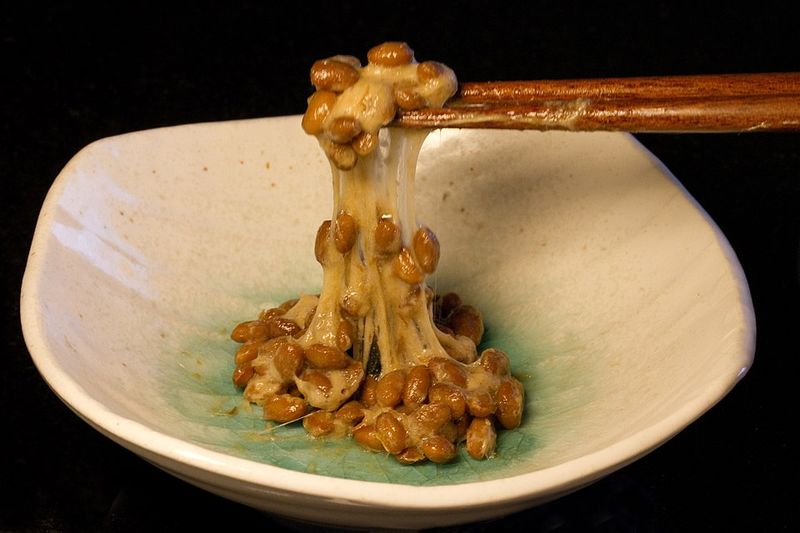
Sticky, slimy, and smelling like old gym socks, natto tests even adventurous eaters. Fermented soybeans create gooey strings that stretch between your chopsticks in disturbingly elastic ways.
Japanese breakfast tables feature it regularly, often stirred dozens of times to increase sliminess. Packed with probiotics and protein, natto offers serious health benefits if you can handle the texture. Many Japanese kids grow up loving what foreigners usually find absolutely revolting on first encounter.
7. Century Eggs

Preserved in clay and ash for weeks, eggs transform into something that looks downright alien. Dark green yolks and translucent brown whites resemble something from a horror movie.
Chinese cuisine treasures them as delicacies despite their sulfurous smell and intimidating appearance. Creamy and rich with complex umami flavors, century eggs taste far better than they look. Sliced over congee or served as appetizers, they’ve been popular for centuries among those brave enough to try.
8. Rocky Mountain Oysters

No oysters from the ocean here, just deep-fried bull jingle bells dressed up with a polite name. Western ranchers waste nothing, turning castration leftovers into crispy bar snacks.
Breaded and fried, they taste like chicken but with chewier texture that gives away their true identity. Montana and Colorado celebrate them at festivals where curious tourists get tricked into trying one bite. Locals laugh watching faces change when the truth gets revealed about what they just swallowed.
9. Surströmming
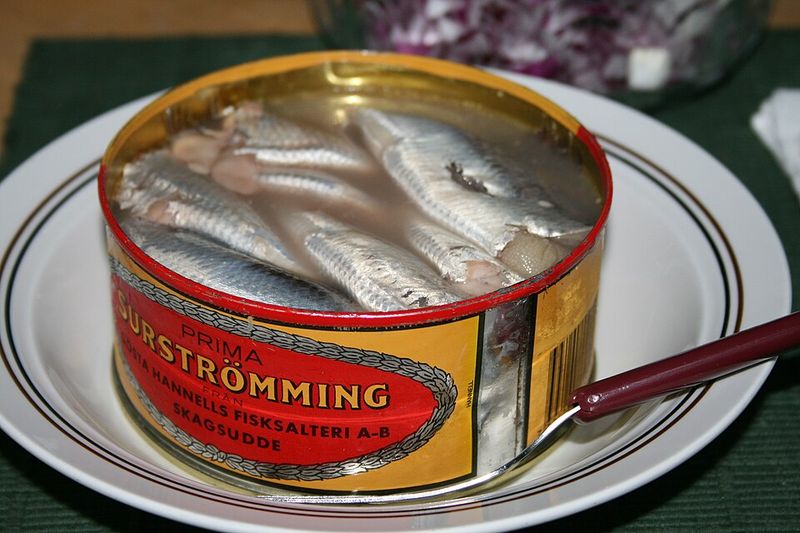
Opening a can of surströmming ranks among the smelliest experiences humans voluntarily endure. Swedish fermented herring releases odors so powerful that people open cans outdoors or underwater.
Northerners eat it on flatbread with potatoes, somehow enjoying what smells like death itself. Fermentation continues inside the can, creating an ominous hiss when opened. Challenge videos show people gagging worldwide, yet Swedes consider it a treasured tradition worth defending despite international mockery and horror.
10. Escargot
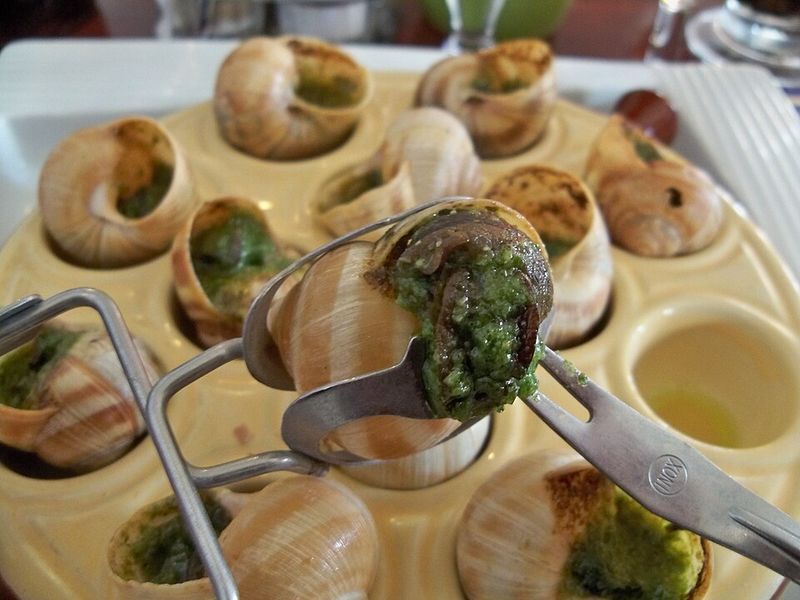
Fancy French restaurants charge premium prices for garden snails swimming in garlic butter. What seems like pest control becomes haute cuisine when presented properly.
Chewy and earthy, escargot tastes mostly like whatever sauce accompanies it, usually loads of butter and herbs. Romans ate them first, but France made them fashionable and expensive. Special tongs and tiny forks make eating snails feel sophisticated rather than weird, proving presentation matters almost as much as taste.
11. Vegemite

Australians grow up spreading thick brown yeast extract on toast like it’s completely normal. Everyone else takes one taste and wonders what went so terribly wrong.
Intensely salty and bitter, Vegemite overwhelms first-timers who spread it like jam instead of using tiny amounts. Aussies swear it’s delicious and nutritious, defending their beloved spread against worldwide confusion. Born from brewery leftovers, it became a national symbol despite tasting like concentrated saltiness mixed with vitamins and regret.
12. Blood Sausage
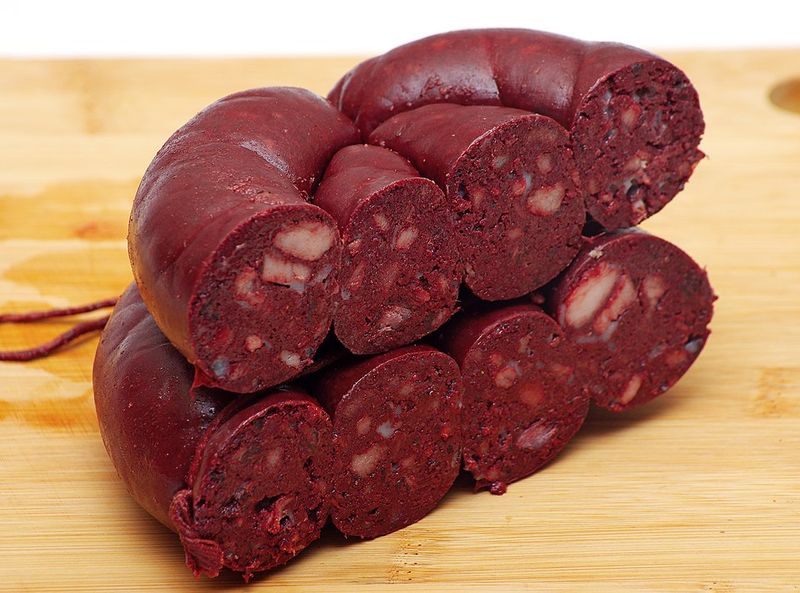
Pigs provide meat, and butchers waste nothing, including blood mixed with fat and grains. Black pudding appears on British breakfast plates alongside eggs without raising eyebrows.
Spanish morcilla, French boudin noir, and dozens of regional variations prove blood sausage conquered Europe completely. Rich and iron-heavy, it tastes earthy with crumbly texture that surprises newcomers expecting something worse.
Ancient preservation methods created this dish that somehow remained popular long after refrigeration made it unnecessary.
13. Lutefisk
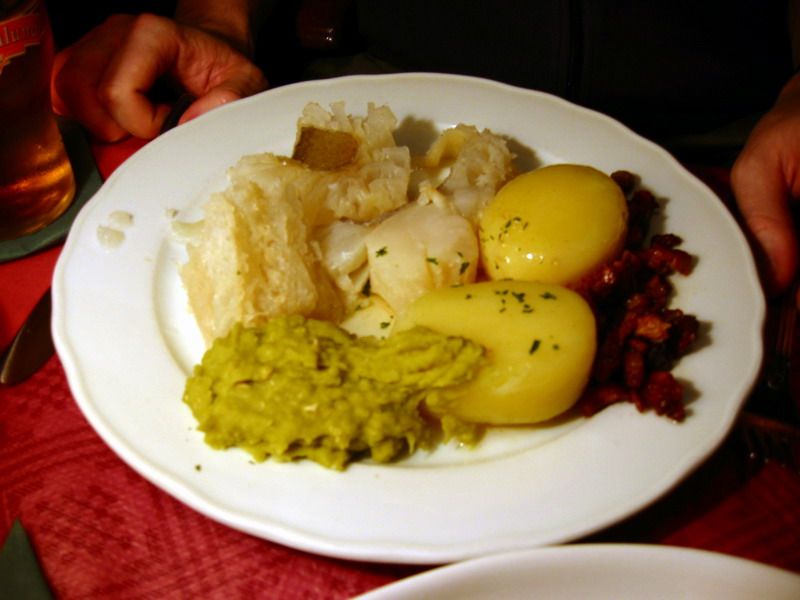
Soaking dried fish in lye creates a gelatinous, jiggly mass that Scandinavians somehow consider edible. Norwegian and Swedish immigrants brought this tradition to America, where it baffles everyone.
Holidays feature lutefisk despite younger generations questioning why ancestors thought lye-soaked fish was good idea. Translucent and quivering, it requires lots of butter and salt to become remotely palatable.
Chemical treatment makes fish keep forever but destroys texture, leaving behind something that barely resembles food anymore.
14. Pickled Herring
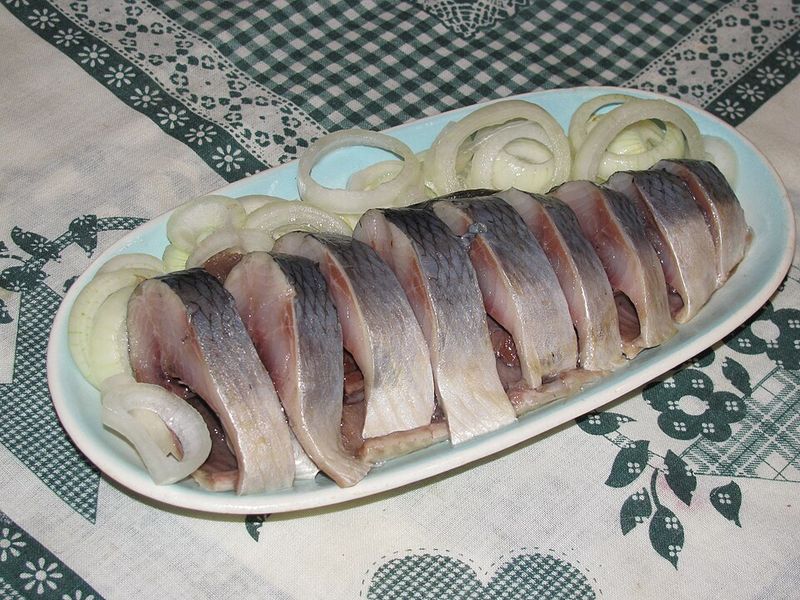
Vinegar-soaked fish might sound unappealing, but Northern Europeans eat it constantly. Scandinavian smorgasbords pile high with herring in cream sauce, mustard sauce, and wine sauce.
Christmas and midsummer celebrations demand pickled herring as mandatory tradition, not optional appetizer. Salty and tangy, it pairs with boiled potatoes and sharp cheese surprisingly well. Jews adopted it too, making it staple at delis and holiday meals.
Preservation method from necessity became beloved flavor profile people actually crave year-round.
15. Balut

Cracking open a fertilized duck egg reveals a partially formed embryo with tiny bones and feathers. Filipino street vendors sell balut as popular snack despite its shocking appearance.
Eaten directly from shell with pinch of salt, it combines soft egg with crunchy texture that makes squeamish people faint. High protein content and supposed aphrodisiac properties keep it popular across Southeast Asia. Locals slurp it down without hesitation while tourists usually need serious convincing and possibly alcohol beforehand.
16. Chicken Feet

Claws and knuckles don’t seem appetizing, yet dim sum restaurants serve chicken feet as prized delicacy. Braised until tender, they offer mostly skin and cartilage with little actual meat.
Sucking meat off tiny bones becomes art form requiring patience and skill that regulars master easily. Chinese, Caribbean, and Latin American cuisines all feature feet in soups and stews. Collagen-rich skin provides health benefits if you can mentally get past gnawing on something that walked around scratching dirt yesterday.
17. Sea Cucumber

Looking like underwater slugs, sea cucumbers have texture that challenges even adventurous eaters. Chinese banquets feature them as expensive delicacy despite their rubbery, nearly flavorless nature.
Preparation takes days of soaking and cooking to make them remotely edible instead of bouncy and weird. Prized more for texture than taste, they absorb flavors from sauces while providing satisfying chewiness. Ancient medicine credits them with healing properties, helping justify why anyone bothers eating something so bizarre and expensive.
18. Jellyfish

Beach stingers become crunchy salad ingredient after proper processing removes their weapons. Asian cuisines slice them thin, creating translucent strips with satisfying crunch and zero flavor.
Sesame oil and soy sauce provide all the taste while jellyfish adds unique texture impossible to replicate. Mostly water and collagen, they offer almost no nutrition but plenty of novelty factor.
Coastal communities turned dangerous ocean drifters into popular appetizers, proving humans will eat absolutely anything with enough creativity and proper seasoning applied.

